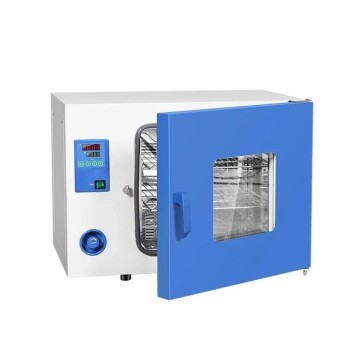A high temperature electric furnace is a type of furnace that is able to reach very high temperatures and is used to melt or burn hard materials. Sometimes, the temperature of the furnace may not rise as quickly as expected, or may not be able to reach the desired temperature at all.
This can be frustrating and can cause delays in work. To fix this problem, it's important to understand the possible causes of the slow temperature rise. Some common reasons for this issue include problems with the power supply, poor insulation, obstructed airflow, malfunctioning heating elements, or a wrong temperature setting.
By identifying the cause of the problem, you can take steps to fix it and get the furnace working properly again.
Possible reasons for slow warming
Voltage supply
Insufficient power supply, due to a low voltage supply or an overloaded circuit, can cause the temperature rise of a box furnace to be slow. If the voltage of the circuit is too low to meet the rated voltage standard of the furnace, it will not be able to generate enough heat to reach the desired temperature. It is important to ensure that the power supply to the furnace is sufficient and meets the required specifications in order for the furnace to function properly.
If you suspect that the low voltage is causing the slow temperature rise, you should check the voltage of the circuit and make sure it is within the required range for the furnace. You may need to contact a professional electrician to help resolve this issue.
Short circuit locally
If the heating elements of the furnace are not functioning properly, it will be difficult for the furnace to generate enough heat. A short circuit in the heating element can cause it to malfunction, leading to a slow temperature rise. Additionally, if the resistance value of the heating element does not meet the design requirements, it may not be able to generate enough heat to reach the desired temperature.
Sealing performance
If the insulation of the furnace is not sufficient, heat will escape from the furnace, causing the temperature to rise slowly. Poor sealing performance can lead to inadequate insulation, allowing heat to escape and making it difficult for the furnace to reach the desired temperature.
Too many protective gas
It is possible that a high flow rate of protective gas, such as nitrogen or argon, could cause the temperature rise of a box furnace to be slow. Protective gases are often used in high temperature furnaces to create an inert atmosphere and prevent oxidation of the materials being heated. However, if the flow rate of the protective gas is too high, it can cool the furnace, making it more difficult for the temperature to rise.
It is important to ensure that the flow rate of the protective gas is properly calibrated and not too high in order to maintain the proper temperature in the furnace.
If you suspect that the protective gas flow rate is causing the slow temperature rise, you should check the flow rate and make sure it is within the recommended range.
The hot spot position of thermocouple
A thermocouple is a device used to measure the temperature in a furnace. It consists of two wires of different materials that are joined together at one end, creating a voltage that is proportional to the temperature at the other end. If the position of the thermocouple is not representative of the temperature throughout the furnace, it may not provide an accurate measurement of the temperature.
This can lead to a slow temperature rise if the furnace is not being heated to the desired temperature because the thermocouple is not accurately measuring the temperature.
Related Products
- Laboratory Muffle Oven Furnace Bottom Lifting Muffle Furnace
- Multi-zone Laboratory Tube Furnace
- Vertical Laboratory Tube Furnace
- Laboratory Vacuum Tilt Rotary Tube Furnace Rotating Tube Furnace
- 1200℃ Muffle Furnace Oven for Laboratory
Related Articles
- Why Your High-Temperature Furnace Failed—And How to Prevent It From Happening Again
- Why Your Ashing Tests Fail: The Hidden Difference Between Muffle and Ashing Furnaces
- Muffle vs. Tube Furnace: How One Choice Prevents Costly Research Failures
- Exploring the Key Performance Indicators of an Atmosphere Furnace
- Why Your High-Temperature Furnace Fails—And How to Choose the Right One





















